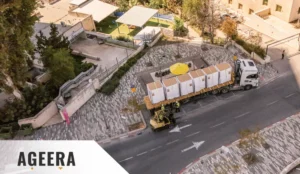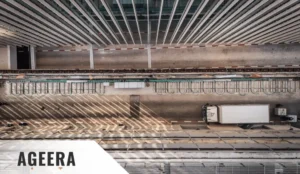How Virtual Power Plants Are Changing the Energy Market
The global energy landscape is undergoing a dramatic transformation. As renewables expand and consumption patterns become increasingly unpredictable, grid operators face a growing challenge — how to balance demand, supply, and stability in real time. Enter the Virtual Power Plant (VPP) — a digital ecosystem where distributed energy assets work together as one coordinated network. At the center of this evolution stands AGEERA, delivering cutting-edge VPP and energy management solutions that turn consumers into active participants in the energy economy.
What Exactly Is a Virtual Power Plant?
A Virtual Power Plant is a network of distributed energy resources — such as batteries, solar panels, electric vehicles, and industrial storage systems — that are intelligently managed by software to behave like a single power station. Instead of building new physical plants, VPPs connect existing assets through cloud-based control, optimizing when and how they produce, store, or release energy.
Using AI algorithms, real-time data, and predictive analytics, platforms like AGEERA’s BESS Management and VPP system coordinate hundreds of sites across regions. This allows the grid to access additional power when needed and helps operators stabilize voltage and frequency — all while generating financial benefits for participants.
Why the Energy Market Needs VPPs
Traditional power plants were built for predictable demand and centralized production. Today, renewable energy introduces constant variability: solar and wind output change by the hour, and electrification of vehicles and industry adds new demand peaks. Virtual Power Plants solve this by enabling distributed flexibility — connecting thousands of smaller sources into one adaptive network.
For businesses, joining a VPP means monetizing energy assets instead of letting them sit idle. Facilities that store energy through systems like AGEERA’s can sell excess capacity back to the grid, reduce consumption during high-price periods, and earn revenue for supporting stability services.
How AGEERA’s Platform Makes It Possible
AGEERA’s Virtual Power Plant architecture integrates with industrial facilities, commercial centers, and infrastructure compounds. The system aggregates real-time data from each site and applies AI-based forecasting to decide when to charge, discharge, or store energy. Every connected client retains full control over their operations while benefiting from participation in a national-scale network.
The platform’s main advantages include:
- Real-time optimization: Algorithms constantly balance load, renewable output, and grid signals to maximize efficiency.
- Market participation: Sites can sell stored energy or grid services, generating additional revenue streams.
- Grid support: Batteries provide frequency and voltage regulation, preventing blackouts and fluctuations.
- Data-driven control: Operators gain full visibility over energy flow, costs, and performance.
- Scalability: From a single facility to hundreds of distributed assets, everything is managed within one secure system.
Transforming Consumers Into Energy Partners
AGEERA’s approach goes beyond technology — it’s about redefining the relationship between consumers and the grid. Through its project deployments across Israel and abroad, the company demonstrates how commercial centers, factories, and campuses can all act as flexible energy partners. By storing energy off-peak and releasing it during high demand, each participant helps stabilize the grid and earns measurable returns.
This model creates what AGEERA calls the “active energy ecosystem” — one where every site contributes to sustainability and profitability simultaneously.
Economic Benefits of Joining a VPP
The financial logic behind Virtual Power Plants is simple: they generate value from flexibility. A battery system that used to serve only as backup now becomes a trading instrument. Through AGEERA’s EMS/VPP platform, operators can forecast pricing, schedule dispatch, and automate participation in grid markets. The outcome is reduced operational costs and new income from grid balancing services.
According to the International Energy Agency, global investments in battery storage are expected to multiply more than fivefold by 2030. Businesses adopting VPP technology early are not only improving resilience — they are entering a growing marketplace of energy flexibility.
Resilience and Sustainability Combined
VPPs are more than financial tools — they’re key enablers of sustainability. By connecting renewable generation and storage, these systems allow cleaner power to flow efficiently through the grid. AGEERA’s technology helps clients capture surplus solar or biogas production, store it, and reuse it later, reducing reliance on fossil fuels.
Projects like the Hezi-Hinam retail microgrid and other industrial installations highlight how this model achieves a double win: stable operations and measurable emission reductions.
Cybersecurity and Reliability
Because VPPs operate across multiple distributed assets, cybersecurity is a top priority. AGEERA’s platform is built with fortified architecture, encrypted communication channels, and local fail-safe controls to maintain continuity even during network disruptions. Each site retains local autonomy, ensuring operational safety regardless of cloud connectivity.
The Future Outlook
Virtual Power Plants represent the next major step in global energy evolution — decentralizing control while improving efficiency. As regulations evolve and renewable integration accelerates, governments and grid operators are actively supporting VPP participation programs. AGEERA is already at the forefront of this transformation, developing scalable models for industry, commerce, and community-level networks.
In the near future, industrial campuses and city grids alike will rely on digital energy orchestration, where flexibility is as valuable as generation. The companies that act now will define that new energy economy.
Frequently Asked Questions
What makes a VPP different from a microgrid?
A microgrid operates locally, while a Virtual Power Plant connects multiple independent sites through software aggregation, acting as one unified network.
Can small facilities participate in a VPP?
Yes. AGEERA’s system is modular and designed for scalability — small storage sites can be aggregated to provide large-scale grid impact.
Do participants lose control over their systems?
No. Each site maintains local autonomy, while AGEERA’s platform coordinates overall dispatch and optimization securely.
How does a VPP generate income?
By trading flexibility — storing energy when prices are low and selling or discharging it when demand spikes, or by providing grid support services.
Is VPP participation environmentally beneficial?
Absolutely. By integrating renewables and reducing fossil-based peaking generation, Virtual Power Plants directly cut emissions and improve grid sustainability.
Summary
Virtual Power Plants are revolutionizing how the world generates and consumes electricity. With AGEERA leading this innovation, industries, campuses, and infrastructure operators can now become part of a smarter, more flexible grid. Explore AGEERA’s technology and view real-world projects that show how energy management is being redefined — one connected site at a time.






